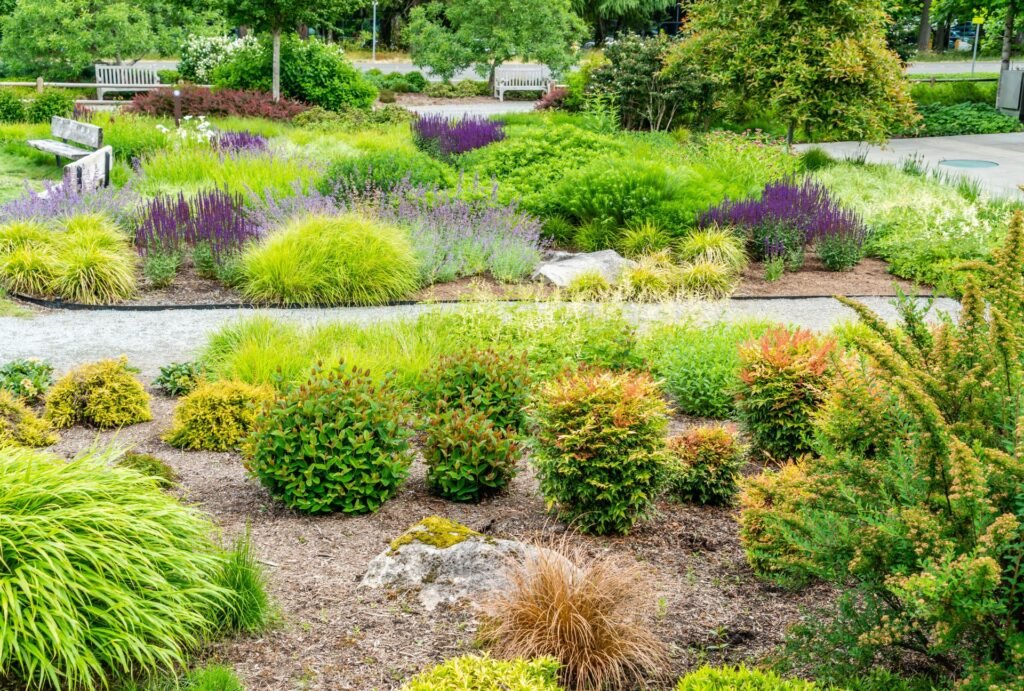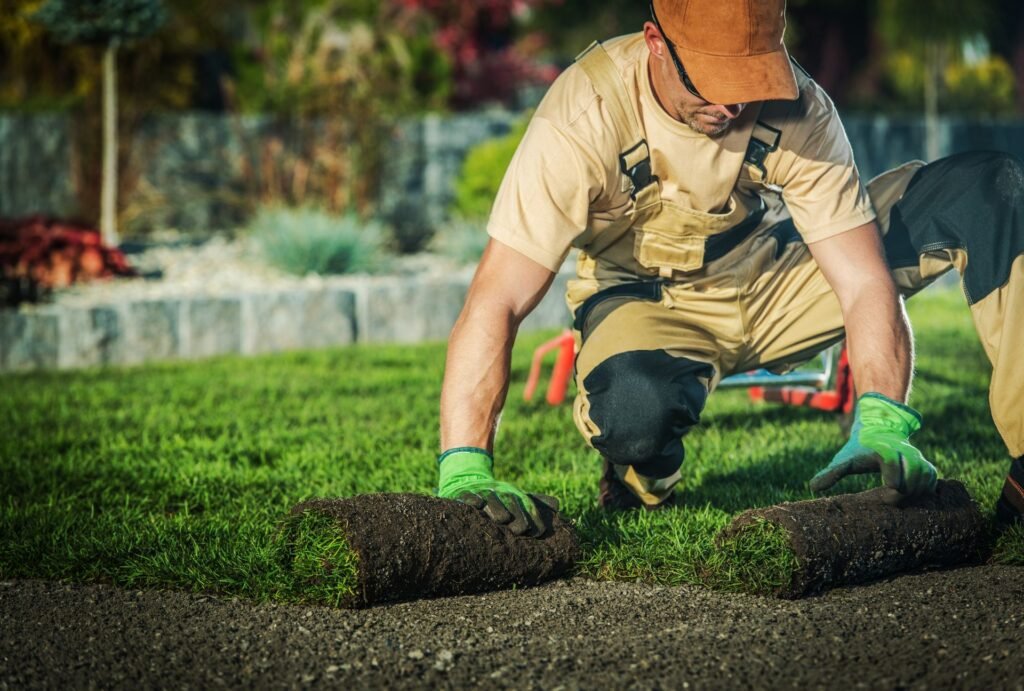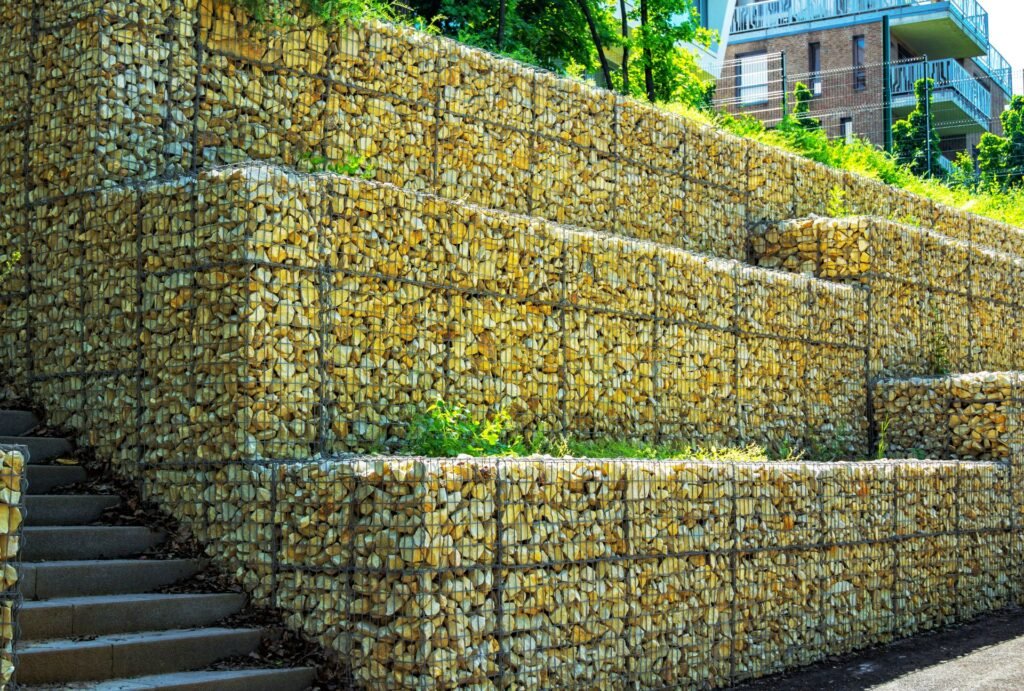Welcome to our top 5 native plants for boundary landscaping in NZ! Whether you want a beautiful low maintenance garden or just want to enhance your outdoor space, choosing the right plants is key. Native plants not only look great but they thrive in our climate, support local wildlife and need less watering and fertiliser. In this post we will introduce you to 5 of the best native plants for boundary landscaping, each chosen for their suitability to NZ’s diverse environments, ease of care and to create a lasting and sustainable fence or screen. Let’s get started and find the perfect plant for your project!
The top 5 native plants for boundary landscaping in NZ are Griselinia Littoralis (Broadleaf), Corokia Cotoneaster (Corokia), Pittosporum Tenuifolium (Kohuhu), Coprosma Repens (Mirror Bush) and Libertia Peregrinans (New Zealand Iris). These plants are perfect for low maintenance eco friendly boundaries that thrive in our climate, for privacy, wildlife support and drought tolerance. Whether you want a dense hedge or a colourful border these native plants will enhance your landscape and the environment.
Table of Contents
Why Native Plants For Boundary Landscaping?
When designing your boundary landscaping, native plants are the way to go for New Zealand gardens. Native plants are the ones that have evolved and adapted to the local environment and thrive without much intervention. By using these plants in your landscape design you’re not only creating a beautiful space but also a healthier ecosystem.
Environmental Benefits
Native plants support local wildlife and biodiversity. They provide food and shelter for native birds, insects and other creatures and sustain the ecosystem. Native plants are also pest and disease resistant so no need for chemical pesticides that harm the environment. By creating a balanced ecosystem native plants keep the land healthy.
Sustainability
One of the biggest benefits of using native plants in your boundary landscaping is sustainability. These plants are adapted to New Zealand’s climate and soil so they need less water, fertiliser and maintenance. So you’ll save time, effort and money on upkeep. Native plants also conserve water by reducing the need for irrigation making them an environmentally friendly option for both urban and rural landscapes.
Aesthetic
In addition to environmental and sustainability benefits native plants also add to the beauty of your landscape. Their natural look blends in with the local environment creating a beautiful outdoor space. Whether you’re designing a lush green fence or a low maintenance privacy screen native plants have a variety of textures, colours and shapes to suit any style.
Cost
Using native plants for your boundary landscaping can be cost effective in the long run. They can thrive in New Zealand’s conditions so no need for frequent watering, fertiliser and pest control. That means lower bills, fewer trips to the garden centre and less time spent on maintenance. Native plants are beautiful and an investment in your garden’s future.
If you’re considering native plants for your boundary, this NZ native plant guide provides excellent advice on selecting the right species for your garden.

How To Choose The Right Native Plants For Boundary Landscaping
Choosing the right native plants for your boundary landscaping is key to a beautiful and functional outdoor space. When selecting plants several things come into play to make sure they thrive in your garden and meet your aesthetic and practical needs.
Consider the size and layout of your garden
The size and layout of your garden will dictate your plant selection. A big garden may suit tall, sweeping hedges or a mix of trees and shrubs to create a boundary. A small garden may need compact plants that won’t overwhelm the space. Think about how your boundary area flows with the rest of your landscape and choose plants that fit in the proportions of your space without overwhelming it.
Consider climate and soil conditions
New Zealand’s climate and soil types are a big factor in plant selection. Coastal areas have salty, sandy soils so you’ll need to choose salt tolerant plants like Pohutukawa or Kowhai that can handle the harsh conditions. For highland or inland areas plants that can take cold and frost like Hebes or Coriaria are best. Always make sure the plants you choose are suitable for your specific climate and soil so they will thrive and require less maintenance.
Not sure which native plants will thrive in your region? Check out this New Zealand native hedging guide for expert recommendations based on different climates and soil types
Height and density
What’s the purpose of your boundary? Do you need a dense, tall hedge for privacy or a more open, low growing boundary? If privacy is the priority consider taller, bushier plants like Totara or Rimu. For a more open feel plants like Mauao or Manuka will give you a more natural, airy boundary. Knowing what height and density you need will lead you to the right choices for a functional and beautiful boundary.
Maintenance
Low maintenance landscaping is a big consideration for many gardeners. Native plants are hardy and adapted to the local environment so less watering and pruning is required. However some plants like Flax may need occasional pruning to shape, others like Kaka Beak may need less intervention. Be aware of the maintenance needs of each plant and choose varieties that fit with the level of care you’re willing to give.
By considering your garden’s size, climate, height requirements and maintenance needs you’ll be able to choose native plants that will add to your landscape and require minimal upkeep.

Top 5 Native Plants For Boundary Landscaping
Boundary landscaping in NZ is the perfect opportunity to add privacy, texture and to the overall look of your garden while using native flora. Using native plants in boundary landscapes supports local ecosystems and is a sustainable and low maintenance solution. Below we will go through the top 5 native plants for boundary landscaping in NZ including their growth habits, care and benefits. For more details on native hedging options and how to use them in your garden, visit this New Zealand native plant resource.
1. Griselinia Littoralis (Broadleaf)
Overview
Griselinia Littoralis, commonly known as Broadleaf, is a native shrub found mainly in New Zealand’s coastal areas. With its dense growth and dark green glossy leaves this plant is great for anyone wanting to create a natural boundary. Broadleaf is a coastal plant that loves the harsh conditions of New Zealand’s coastline so is perfect for gardens near the coast or windy areas.
Ideal for
Broadleaf is great for dense hedging, privacy screens and as a backdrop in coastal gardens. Its versatility and hardiness makes it a great option for residential and commercial properties looking for natural evergreen screening.
Growth and Care
- Height: Can grow up to 4m (13ft) tall when mature.
- Spread: 2-3m (6.5-10ft) wide, dense hedge.
- Growth Rate: Moderate to fast depending on environment.
- Sun: Full sun to partial shade.
- Water: Once established it’s fairly drought tolerant but needs regular watering in the early stages of growth.
Benefits
- Glossy dark green foliage for year round privacy.
- Wind and salt tolerant so perfect for coastal gardens or windy areas.
- Low maintenance, no pruning required once established.
Best Suited For
Griselinia Littoralis is suited to coastal or windy areas. Its robust nature can withstand the harsh conditions of salt laden winds and exposed areas so perfect for seaside properties.
2. Corokia Cotoneaster (Corokia)
Overview
Corokia Cotoneaster or Corokia is a hardy native New Zealand shrub with small narrow leaves and twisted branches. Known for its unique look Corokia is used in landscaping for its toughness and ability to thrive in tough conditions. This plant is great for those wanting to add beauty and function to their boundary landscaping.
Ideal for
This shrub is great for low to medium height boundary fencing and informal hedges. Corokia’s unique gnarled shape and compact size makes it perfect for smaller gardens or to frame larger boundary plants.
Growth and Care
- Height: 1-3m (3-10ft) depending on the variety.
- Spread: 1-2m (3-6.5ft).
- Sun: Full sun to partial shade.
- Hardiness: Extremely hardy, can thrive in a wide range of soils and conditions, coastal and dry areas.
Benefits
- Drought tolerant and can thrive in a range of conditions, coastal and dry areas.
- Can withstand harsh conditions like salt winds so perfect for coastal boundary areas.
- Twisted branches and small leaves for a sculptural look.
Best Suited For
Corokia is best for drier areas and areas that need a tough low maintenance hedge. It can also be a beautiful and functional boundary plant in windy or salt areas.
3. Pittosporum Tenuifolium (Kohuhu)
Overview
Pittosporum Tenuifolium or Kohuhu is a versatile shrub with dark green or variegated leaves found in both coastal and inland areas of New Zealand. Kohuhu is used in boundary landscaping for its attractive foliage, low maintenance and can thrive in a range of conditions including urban environments.
Ideal for
Kohuhu is great for low to medium height screens and hedges, urban gardens or poor soil areas. It’s often used to add structure and greenery to low maintenance properties.
Growth and Care
- Height: 2-4m (6.5-13ft) tall.
- Spread: 1-2m (3-6.5ft) wide.
- Pruning: Occasional pruning to shape and prevent overcrowding.
- Ideal Planting Conditions: Will thrive in a range of soils, sandy to clay and full sun to partial shade.
Benefits
- Attractive dense foliage for year round screening.
- Highly urban tolerant, pollution, poor soil, heavy foot traffic.
- Wildlife friendly, provides shelter and food for birds and insects.
Best Suited For
Kohuhu is perfect for urban gardens or areas where the soil is not ideal. It’s great for properties where privacy is needed but soil is not ideal for other types of plants.
4. Coprosma Repens (Mirror Bush)
Overview
Coprosma Repens or Mirror Bush is a fast growing shrub with striking glossy leaves and vibrant colours. This plant is used for its fast growth and to form dense hedges and privacy screens. Mirror Bush foliage often displays a range of colours from green to red and purple so it’s a great addition to any boundary.
Ideal for
Mirror Bush is great for dense hedging and privacy screens. Also perfect for gardeners who need a fast growing hardy plant for screening.
Growth and Care
- Height: Can grow to 3-4m (10-13ft) tall if not pruned regularly.
- Spread: 2m (6.5ft) wide.
- Growth Rate: Fast growing so great for those who need a hedge quick.
- Maintenance: Low maintenance, occasional pruning to shape and prevent overgrowth.
Benefits
- Fast growing so great for quick privacy.
- Low maintenance with attractive foliage for year round colour.
- Good for coastal areas and tough environments where fast growth is required.
Best Suited For
Mirror Bush is best suited for coastal areas and other tough environments where fast growing plants are needed for immediate privacy or wind protection.
5. Libertia Peregrinans (New Zealand Iris)
Overview
Libertia Peregrinans or New Zealand Iris is an ornamental grass like plant with spiky upright foliage and white flowers. Used as a border or edging plant this striking native adds texture and movement to any boundary landscape. Great planted in mixed planting schemes or as a standalone feature in garden beds.
Ideal for
New Zealand Iris is great for adding contrast along boundaries especially in dry areas. Its elegant form and delicate flowers makes it a great addition to your boundary plantings.
Growth and Care
- Height: 0.5-1m (1.5-3ft) tall.
- Spread: 0.5m (1.5ft) wide.
- Ideal Conditions: Full sun and well drained soil. Tolerates dry conditions once established.
Benefits
- Low maintenance, drought tolerant.
- Adds texture and movement to your landscape with its spiky upright leaves and elegant white flowers.
- Attracts pollinators like bees and butterflies, helps with local biodiversity.
Best Suited For
Libertia Peregrinans is great for adding contrast and texture to other boundary plants especially in dry areas or as part of a mixed planting scheme.
Incorporating native plants into your boundary landscaping in New Zealand not only enhances your garden and privacy but also the local ecosystem. The five plants above—Griselinia Littoralis, Corokia Cotoneaster, Pittosporum Tenuifolium, Coprosma Repens and Libertia Peregrinans—are all great for New Zealand gardens. Each plant has its own benefits from salt tolerance and wind resistance to low maintenance and beauty so are suitable for different conditions and requirements. Whether you need a coastal hedge, a wildlife friendly barrier or an ornamental edge these native plants will help you create a thriving and sustainable boundary landscape.

Planting And Caring For Your Native Boundary Plants
Planting native boundary plants is a great way to boost your landscape and support your local ecosystem. Follow these simple steps to get it right.
Planting Tips
- Choose the Right Spot: Before you plant, check out the spot you want to put your boundary plants. Native plants in NZ generally love the conditions they are used to, so consider the sun and soil type. Some native plants like flax and koromiko like full sun, others like kanuka or totara can tolerate partial shade. Always choose a spot that matches the plant’s requirements.
- Soil Preparation: Healthy well draining soil is essential for a good planting. Start by loosening the soil to improve air flow around the roots. Remove weeds and debris to give your plants the best start. Spacing is important for growth—make sure each plant has enough room to grow without crowding. Most native plants should be spaced about 30-60cm apart depending on their ultimate size.
- Adding Organic Matter: For root growth, mix in some organic matter like compost or well rotted manure into the soil before planting. This will improve soil fertility and promote healthy growth especially in poor soils.
If you’re looking for step-by-step guidance on planting and maintaining a native hedge, this comprehensive guide can help you get started.
Caring for Native Plants
- Watering: New native plants need consistent watering to establish good roots, especially in the first few months. While native species are generally drought tolerant once established, they need watering when first planted—especially during dry spells.
- Pruning: Regular pruning is important for shape and health of the plants. Prune dead or damaged branches to encourage new growth and air flow. Pruning also prevents overcrowding and keeps your boundary plants looking neat and tidy.
- Seasonal Care: Each season brings its own challenges. During winter, mulch around young plants to protect the roots from the cold. In wet months, make sure your plants are in well draining soil, waterlogged roots can rot. Consider adding gravel or organic matter around the base to help with drainage.
By following these tips your native boundary plants will not only grow but also create a lovely sustainable landscape for the environment.

FAQs: About Top 5 Native Plants For Boundary Landscaping NZ
Why should I choose native plants for boundary landscaping in New Zealand?
Native plants are well-suited to New Zealand’s unique climate, making them easier to care for and more resilient than non-native species. They help preserve local biodiversity, support wildlife, and are generally low-maintenance. By choosing native plants, you can create a sustainable and environmentally friendly landscape while reducing your water usage and reliance on fertilizers.
How do I choose the right native plants for my boundary landscaping?
Consider factors such as the size of your garden, the local climate, and the soil conditions. Some plants are better suited for coastal areas, while others thrive in drier or cooler climates. You should also think about how tall and dense you want your boundary plants to be, and whether you want them to provide privacy, act as a windbreak, or simply add beauty to your garden.
What are the benefits of using native plants for boundaries?
Native plants offer numerous benefits including enhanced aesthetic appeal, reduced water and fertilizer needs, and a positive impact on local wildlife. They are also more likely to thrive in your garden, requiring less maintenance and fewer pest treatments. Additionally, native plants help maintain the unique ecological balance of your region.
Are these native plants suitable for all types of soil and climates in New Zealand?
While these plants are all native to New Zealand, some varieties are better suited to specific conditions. For example, Griselinia Littoralis is ideal for coastal areas due to its salt tolerance, while Pittosporum Tenuifolium thrives in urban environments. Make sure to choose plants that align with your specific soil and climate conditions for optimal growth.
Can native plants be used for both tall hedges and low borders?
Yes, many native plants are versatile enough to suit both tall hedges and low borders. For instance, Corokia Cotoneaster can be pruned into a low, dense hedge, while Griselinia Littoralis is perfect for taller, more robust screening. Make sure to choose the right plant based on the height and density you need for your boundary.
How often do I need to water native boundary plants?
Native plants generally require less water than non-native species, especially once established. However, newly planted native plants will need regular watering until their roots are fully established. After that, most of these plants will require only occasional watering, especially during dry spells, making them ideal for low-water gardens.
How can I maintain my native boundary plants throughout the year?
Maintenance varies depending on the plant, but in general, you should regularly prune your native plants to maintain their shape and remove any dead or damaged foliage. Some plants, like the Pittosporum Tenuifolium, may require annual trimming, while others may need less frequent attention. Mulching can help conserve moisture and suppress weeds, and a light feed of organic fertilizer can be beneficial in the spring.
What is the growth rate of these native boundary plants?
The growth rate varies by species. For example, Coprosma Repens is known for its fast growth, making it ideal for quickly establishing a boundary, while other plants like Libertia Peregrinans may grow more slowly but are excellent for creating a sustainable, low-maintenance border. Generally, native plants grow at a moderate pace and are well-suited to long-term landscaping.
Do these plants attract wildlife?
Yes, many native plants are excellent for attracting local wildlife. For example, the Griselinia Littoralis provides habitat for birds, while the flowers of Libertia Peregrinans can attract pollinators like bees. By incorporating native plants into your boundary landscaping, you can support local ecosystems and contribute to the health of the environment.
Can I mix different native plants for a more diverse boundary landscape?
Absolutely! Mixing different native plants can create a more dynamic and visually interesting boundary while maintaining ecological harmony. A blend of plants with varying heights, textures, and colors can enhance the beauty of your landscape while offering benefits such as greater wildlife attraction and increased resistance to pests and diseases.
Conclusion
Using native plants for your boundary landscaping in New Zealand has many benefits – it enhances your garden, supports local wildlife and creates low maintenance outdoor spaces. These plants are climate adapted so they need less water, fertilisers and pesticides – they’re eco friendly and cost effective. They also provide a natural habitat for native birds, insects and other wildlife so you’re enriching the local ecosystem. By using native plants in your boundary landscaping you can turn your garden into a low maintenance, eco friendly space that’s thriving all year round. If you’re looking to revamp your outdoor space consider planning your boundary landscaping with native plants or consult a local nursery to see what’s available in New Zealand.





